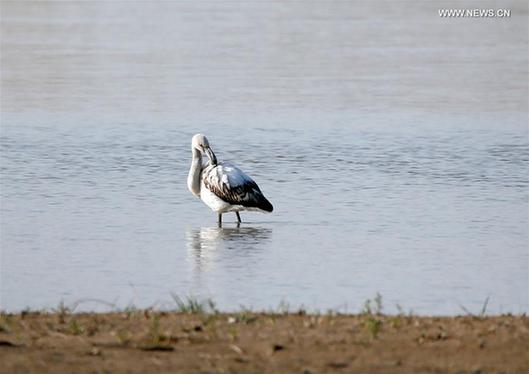Greater efforts must be made to save fast disappearing wetlands
(China Daily) Updated: 2016-07-08 07:08
 |
|
A flamingo takes a rest at Heihe Wetland National Nature Reserve in Zhangye, northwest China's Gansu province, April 9, 2016. It is the first time to see flamingo at the reserve, according to a staff member of the reserve administrative bureau. [Photo/Xinhua] |
So far, 186 people have died and 45 people are missing in the floods in 26 provinces, autonomous regions and municipalities. The direct economic losses from the floods that have affected some 33 million people are estimated to be about 50.6 billion yuan ($8 billion). Changes in land use, in particular the reduction of wetlands, due to social and economic development needs, have increased the severity of the floods. China Business News commented on Thursday:
Protecting wetlands not only helps in the fight against climate change and biodiversity conservation, it also helps flood control efforts and increases people's welfare.
According to the State Forestry Administration, over the past decade, China's wetland area has decreased by 3.40 million hectares, and floods, droughts, red tides, sand storms, desertification and other natural disasters are all closely related to the disappearance and degradation of the country's wetlands.
Infrastructure and reclamation are still the main threats to the country's wetlands, with the coastal wetlands facing the most serious threats.
Over the past 50 years or so, more than 60 percent of the country's natural coastal wetlands have disappeared.
The forestry authority has announced that the bottom line is that at least 3.24 million hectares of wetland should be maintained across the country.
This requires not only curbing the reduction of wetland area and degradation trends with tougher legislation at the national level that is strictly enforced, but also promoting the construction of an ecological civilization by promoting greater awareness of the importance of wetlands.












